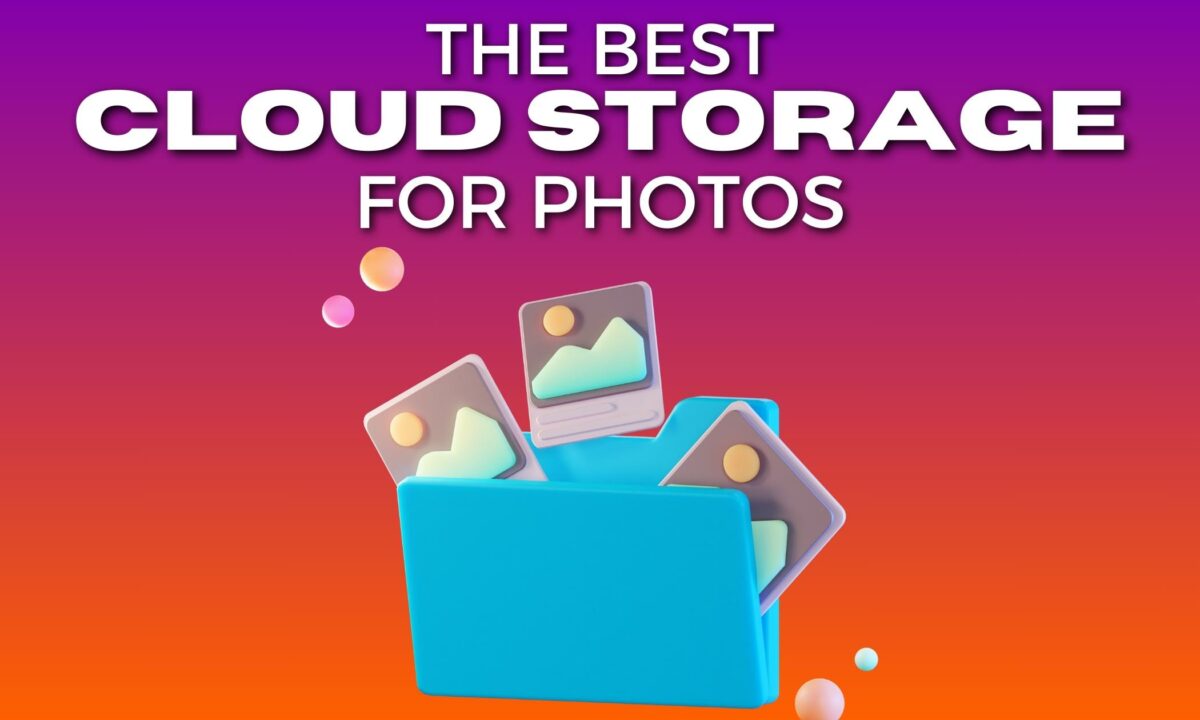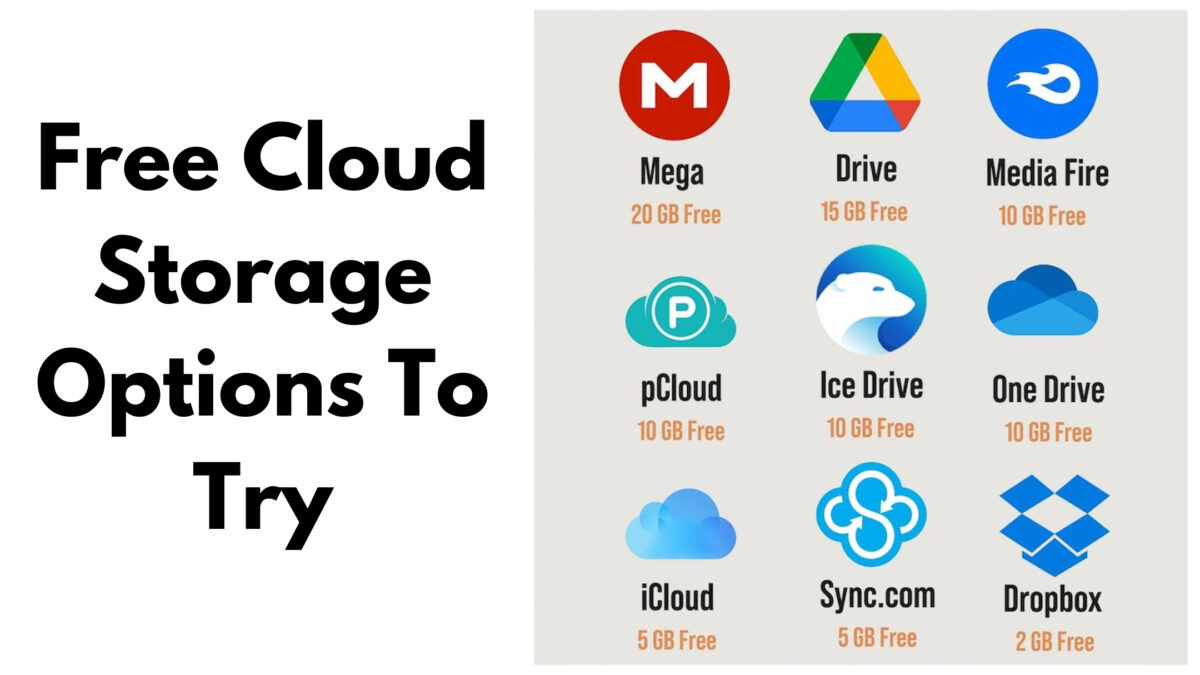The Best Cloud Storage for Photos
So you’ve got tons of photos, right? Snapping away like there’s no tomorrow.
But then comes the headache.
Where do you store all these images?
You try saving them on your computer, but soon it’s like, “Hey, no more space, buddy!”
You look at cloud storage options, and it’s like wandering through a maze. So many choices. And too much tech jargon.
It’s a mess, and you’re just about ready to start storing photos anywhere you can.
And this isn’t just about running out of space. It’s about losing your precious photographs. Imagine your computer crashes and bam!
Years of photos gone in a blink.
But I’ve got a solution for you with this article. I’m going to break down the best cloud storage options for photographers like you. I’m talking about easy access, ample space, and top-notch security. The whole nine yards.
After reading this, you’ll be armed with the knowledge to pick the perfect cloud service for your photo storage needs. And then you can say goodbye to storage woes and hello to a seamless, stress-free photography storage experience.

Understanding Cloud Storage for Photographers
When you think of storing your precious photographs, cloud storage emerges as a modern-day vault.
And it’s not just about keeping your files but also about enhancing your workflow with smart features and seamless access.
Standout Features of Cloud Storage Services

The ideal cloud storage service for your photography needs should come with a set of core features that cater to the high-resolution nature of your work.
Here’s what to look for:
- Robust File Backup: Automatic backups safeguard your images from accidental loss.
- File Syncing: Synchronize your work across devices, ensuring you always have the latest version of your photos.
- Generous Storage Space: Since photographs can be large, ample storage is a must. Options range from free limited storage to expansive space for a monthly fee.
- Tiered Access Levels: Securely share files with clients or collaborators by controlling their access.
- Search Tools: Efficiently locate specific images with powerful search tools using tags and metadata such as date, camera type, or lens used.
The Importance of Accessibility and Supported Platforms

Being a photographer, you’re always on the move. So, accessibility is also a big factor.
Whether you’re in a cafe or out in the wilderness, the ability to reach your photos is important.
- Multi-Platform Support: The service should be available on various devices, including mobile devices, tablets, laptops, and desktops.
- Web Access: Sometimes, you might not have your devices on hand. In these situations, web-based access can be a lifesaver.
- File Sharing Capabilities: When you want to deliver images to a client or perhaps get a second opinion from a peer, the ability to share a link directly to your work streamlines the process.
- Offline Access: Some platforms offer offline access, which allows you to work with your photos without an internet connection.
Comparing Free vs. Paid Cloud Storage Options
Now, let’s look at what each storage solution offers to ensure your photos are safe and accessible. Because your work is precious, and so is the way you store it.
Benefits of Paid Cloud Storage Plans
Opting for a paid cloud storage plan is investing in peace of mind.
These plans often offer a cost-effective way to secure unlimited storage for your ever-growing photo library, so you won’t have to worry about running out of space at critical moments.
Paid plans also typically provide advanced features, like enhanced photo editing tools and priority customer support, which can be invaluable when you’re on a deadline.
- No Ads: Your paid subscription keeps things professional, stripping away any distracting ads.
- Exclusive Features: Access to robust tools and features can give your photography business an edge.
- Higher Transfer Limits: Transferring vast photo files? Paid plans usually offer higher upload and download speeds.
Here’s a quick snapshot to compare:
| Feature | Free | Paid |
|---|---|---|
| Storage Capacity | Limited | Unlimited (depending on the plan) |
| File Size Limits | Yes (often quite restrictive) | Higher or no limits |
| Ads | Likely to have ads | No ads |
| Customer Support | Basic | Priority and Enhanced |
| Additional Tools | Basic | Advanced photo editing tools |
Exploring Free Cloud Storage Solutions

Now let’s look at free cloud storage solutions.
Free plans are perfect for photographers just starting out or those who need to store a modest amount of images.
However, keep in mind that the free storage offered is often limited, and you might find your collection quickly outgrowing the space.
- Limited Storage: Usually starting from 5GB to 15GB, which fills up quickly with high-resolution images.
- Possible Ads: Some free services use ads to generate revenue, which could interrupt your workflow.
- Basic Tools: You might get to play with some basic editing tools, but nothing too advanced.
Remember, free plans are a good way to test your storage needs before committing to a paid plan.
They’re also cost-effective for backing up and sharing smaller batches of images.
Just be prepared for the occasional promotional email or ad interruption in exchange for the no-price tag.
Best Cloud Storage Services for Photographers

Google Photos and Drive
Google Photos is your go-to if you want a service that offers seamless integration with your Android devices and Google accounts. It allows for automatic photo backup from your phone and easy sharing. Pair it with Google Drive for larger storage capabilities, and you have a powerful duo that gives you access to your images and the ability to collaborate on projects with others.
Adobe Creative Cloud and Lightroom
If you regularly use Lightroom or Photoshop, consider Adobe Creative Cloud. With it, every edit you make can be synchronized across devices. This is particularly beneficial if you value a workflow that is integrated with your photo-editing software – perfect for when you’re making those minute adjustments to your stunning captures.
Apple iCloud vs Microsoft OneDrive
Apple iCloud is ideal if you’re immersed in the Apple ecosystem. It offers straightforward photo backup from your iPhone and syncs with your Mac’s Photos app.
On the flip side, Microsoft OneDrive provides an excellent option for Windows users, with solid integration into Windows 10 and Office apps. Use OneDrive if you value having your work documents and photos in one place.
Flickr, Amazon Photos, and Other Niche Services
Don’t forget about Flickr, a beloved place for photographers to share their work with a community. For Amazon Prime members, Amazon Photos offers unlimited full-resolution photo storage, which can be a game-changer. Niche services like these may offer the specific features you need, whether it’s community feedback or just a reliable place to store your precious work.
Security and Privacy in Photo Storage

The safety of your photos depends not just on selecting a cloud storage provider that offers ample space but also on choosing one that prioritizes the security of your photos and your privacy.
Encryption and Protection Against Data Breach
When you upload your photos to the cloud, you trust that the service will fortify your data with robust security measures.
Look for providers that offer end-to-end encryption, which ensures that your data is encrypted from the moment it leaves your device until it is safely stored on the servers.
This is like a sturdy lock on your front door. It makes it incredibly hard for intruders to access your personal space.
- Backup: Regular backups are a part of sound security practices. Imagine them as routine check-ups for your data’s health, spotting potential issues before they become serious.
- Data Breach: Should the worst happen and servers are stolen or compromised, a provider that has actively backed up and encrypted your data ensures that your personal photos stay out of reach.
Privacy Concerns and Facial Recognition Technology

Your storage provider might boast of organizational features like facial recognition, which can seem like a friendly assistant helping sort through your pile of digital prints.
However, consider how this technology is used:
- Ask yourself if you’re comfortable with how facial recognition data is stored, used, or possibly shared.
- Privacy policies should be transparent, indicating exactly what data is collected and how it’s protected.
Your photos are an intimate look into your life, and you want to be sure that no one else is peeking through the keyhole without your explicit consent.
So, keep a watchful eye on the privacy terms to guarantee that your digital memories are as private as the physical ones you keep tucked away.
Managing Storage Space and File Types
When it comes to cloud storage, your photos deserve a space where quality isn’t compromised.
Whether you’re dealing with RAW files or evaluating how much storage you have at your disposal, making smart choices will provide a seamless photography workflow.
Maximizing Storage Capacity for RAW Files

RAW files are the digital negatives of your photographic work. They contain all the uncompressed image data your camera sensor captures.
And because high-quality images generally mean larger file sizes, finding a cloud service that doesn’t skimp on storage space is critical.
- Look for cloud services offering generous storage limits:
- Some services start with free allocations that can range upwards of 100GB, while paid subscriptions can offer from 1TB to unlimited storage options.
- Consider the scalability:
- Your future storage needs might grow, so choose a provider that allows you to upgrade storage capacity easily.
Given the file size of RAW images, you’ll want a service that can handle the bulk without flinching—both in terms of storage allocation and upload/download speeds.
Understanding File Size Limits and Bandwidth
Every cloud storage provider has its own set of rules when it comes to file size limits and bandwidth. These can significantly affect your ability to upload, share, and access your photos.
- File Size Limits:
- Knowing the maximum file size limitations is crucial, especially when you work with large RAW images or video files. Providers may impose limits ranging from a few GBs per file to no limit at all.
- Bandwidth:
- Bandwidth dictates how much data can be transferred to and from the cloud service in a given time frame. Look for services with high or no bandwidth limits to avoid slow upload times and access interruptions.
It’s like having a fast car but being told you can only drive a certain number of miles per day. You’ll want the freedom to “drive” as much as you need.
By paying attention to these factors, you can see to it that your chosen cloud storage will not just be a place to park your photos but a versatile tool to enhance your photography arsenal.
Enhancing Productivity with Additional Features
In additional to storing your photos, a lot of cloud storage solutions also come with additional features you can take advantage of. Let’s look at a few of the popular features.
Collaboration Tools and Sharing Capabilities
Imagine working on a project with a team spread across different locations. Cloud storage services that include robust collaboration tools make it easy to work together.
If you’d like this, look for integrations with popular editing software that allow you to make real-time changes that everyone can view and comment on. And other features like:
- File Sharing: Easily share albums or individual photos with clients and colleagues.
- Sharing Sites Links: Generate links to your galleries that can be sent via email or embedded in websites.
- Support for Multiple File Types: Not just for photographs, but also videos, PDFs, and other media.
Backup Solutions and File Recovery Options

Backing up your photos is non-negotiable.
With a reliable backup solution, you won’t just save your work. You’ll save your day.
Whether you accidentally delete a file or face a device failure, a cloud storage service with file recovery options ensures a stress-free experience.
- Automatic Sync: Your edits are continuously backed up, providing both peace of mind and a streamlined workflow.
- File Versioning: Roll back to previous versions if necessary. A blessing when editing is an iterative process.
Your photos are safe and accessible whenever and wherever your creative process takes you.
Choosing the Best Cloud Storage for Photos
Choosing the right cloud storage isn’t just about finding space online. You also have to weigh the trade-offs between cost and value and match features to your specific needs as a photographer.
Evaluating Cost vs. Value and Storage Plans
Cost-Effectiveness: Before committing to a cloud storage service, assess the cost relative to the value it provides. Consider the storage options and plans available:
- Pay-As-You-Go: Ideal if your storage needs fluctuate over time.
- Monthly/Yearly Subscriptions: Often come with added features and better value per GB.
- Lifetime Storage Plans: An upfront cost that could lead to savings down the line.
Weigh the advantages of each plan against the cost to determine what’s most affordable for you long-term.
Storage Plans:
- Free tiers usually have limitations, like reduced storage space or lacking some advanced features.
- Paid tiers can range from a reasonable $10 per month for 2TB to higher-priced plans, offering more space and features.
Selecting the Best Option for Different Needs
Identifying the best option for you means considering various factors:
- Simplicity: A user-friendly interface can make your life a lot easier.
- Specific Needs: Do you need convenient access on multiple devices? Is lifetime storage important to you?
- Professional Use: As a photographer, you might want best-in-class security, photo editing tools, or the ability to store RAW files.
- Some services specialize in multi-format support, making them ideal for photographers who work with various file types.
And one final thing I’d like to not is to remember, the best cloud storage service is the one that aligns perfectly with your workflow, security needs, and budget.
So, take your time to explore and compare.
Because your photographs deserve a reliable and secure home in the cloud.
FAQs About Photo Storage
How can photographers ensure their photos are safe in cloud storage?
To protect your photographic works in the cloud, consider using storage services that offer robust encryption, two-factor authentication, and a history of reliable uptime. Make regular backups and maintain copies across different platforms or devices to ensure redundancy.
What are the top free cloud storage options for photo backup?
Free cloud storage options like Google Photos and Dropbox offer a limited amount of space at no cost, ideal for backing up select photographs. Keep in mind, though, that for larger portfolios, you might quickly outgrow free plans and need to consider paid upgrades.
Which cloud storage offers the best features for video storage for photographers?
If you deal with large video files, look for cloud services that specialize in media storage, such as IDrive or pCloud. These platforms often provide ample space and bandwidth, with high-speed transfer capabilities which are essential for video data.
Is iCloud a suitable option for professional photography storage needs?
iCloud is a viable option for photographers, especially if you’re integrated within the Apple ecosystem and prefer seamless synching across devices. However, compare its storage plans and features with others to ensure it fits your professional requirements.
What are the best cloud photo storage solutions for iPhone users?
iPhone users benefit from iCloud’s native integration, but other notable options include Google Photos for its AI-assisted organizing features and Adobe Creative Cloud for its direct connection to photo editing tools.
Which cloud storage provides the most reliable long-term solution for photo archiving?
For long-term archiving, you’ll want a cloud service with a track record of stability and data integrity, such as Amazon AWS or Backblaze. These services often offer plans suited for archiving, where less frequent access aligns with lower storage costs.





